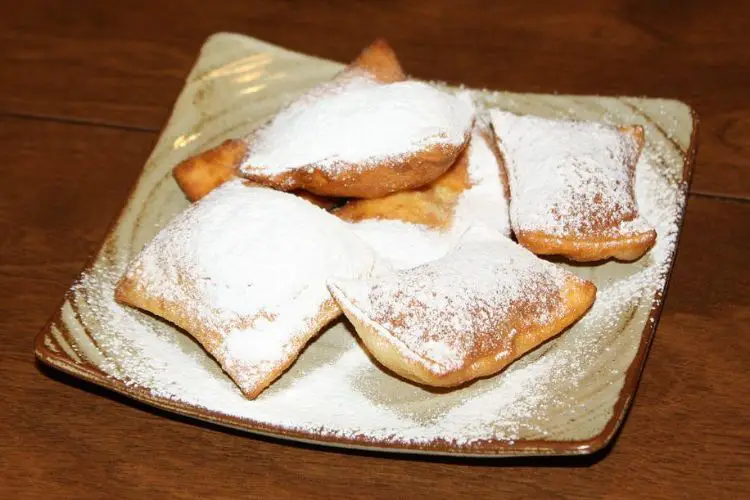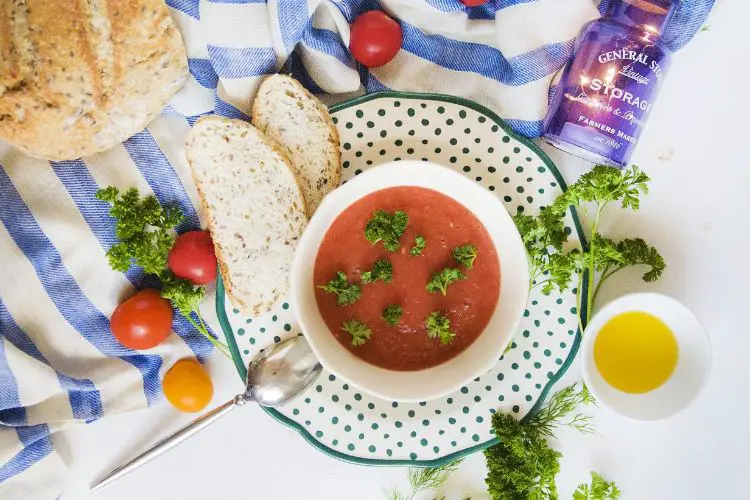England Preserves
Continuing our series of interviews with successful artisan food and drink producers, we chanced upon the work of Sky Cracknell and Kai Knutsen, who established their kitchen counter jam and chutney making business eleven years ago in South East London. Just landing in the Homepage of their website at www.englandpreserves.co.uk is a free masterclass on the importance of good branding, succinct text, great photography and a stylish eye for small details and clean composition.
The knowledge and experience that new food entrepreneurs can share with others is invaluable for aspiring entrants into the industry. So we sent Sky some questions to help spread the wisdom about how the business was started, how it operates and what her advice would be if any readers of The Foodie Bugle are thinking of launching their own food business.
The Foodie Bugle: Sky, how did you start England Preserves in the very beginning? Describe the utensils, kitchen, sourcing of fruit and ingredients etc. How many people worked with you then and how many do you employ now?
Sky: We began England Preserves in a tiny domestic kitchen in a flat in Wood Green, in London, that I shared with my brothers and Kai. We had an old electric cooker called a Tricity Tiara. One of the main products we sold was quince cheese and because I had not long ago been a student I didn’t want to buy any equipment, which meant that I spent many hours pushing quince through a broken sieve, until my mum came to stay and persuaded me to invest £15 in a mouli. This was my first equipment revolution.
The flat was soon taken over by the business, the dining table was covered in frames with jellies dripping through muslin cloth. Every available space was taken up with jars of preserves, cupboards, under the sofa and along the hall. For many years Kai and I worked alone, but we now work as a team of four, still very much hands-on, working in the kitchen or packing parcels when it is needed.
Sourcing of ingredients was almost the primary inspiration for the business. We wanted to create a reflection of the English countryside and culture. Selling through farmers’ markets was ideal for this and initially all of our produce was sourced from different farmers we met in the markets. As the business grew and our dynamics changed, we needed greater continuity and reliability. Unfortunately quite a few farmers used to try to sell rotten fruit to us. We went to ADAS {an agency that provides environmental solutions at www.adas.co.uk} and were given the names of a few growers that could meet our needs within the UK. We still get our vegetables from a farmer in Lincolnshire, whom we sourced from in the setting up of the business.
TFB: Did you originally train to do the job you are doing now or is your business a second career choice which required additional training?
Sky: Kai did some culinary training when she was sixteen years old, before going off to art school and she also worked as a chef intermittently. She gained a degree in sculpture and then went to work in editing. I had recently graduated from a design degree. We both come from families where preserving fruit was a regular kitchen activity, and although we supply our parents with as much jam as they want they still make jam. We immersed ourselves completely in developing our knowledge, techniques and recipes: it became quite an obsession.
TFB: How did the business plan for England Preserves develop from paper to reality?
Sky: We were very fortunate to be able to sell our products through farmers’ markets, because this allowed for a great deal of experimentation and low input of capital. We started the business very small with practically no capital and were able to gradually develop through selling at these markets.
TFB: How did you find the financing you needed in the very beginning or were you so small you did not need any?
Sky: I guess we fell into the “too small to need much money” category. I surprised my Dad one afternoon when he rung for a chat, by telling him I had left my job and was embarking on a business making jams. He sweetly expressed his delight and sent me a cheque for £50 to start me off. I like to think of this as my start up fund. Kai continued to work for a few months and then joined me full-time. We have grown gradually, putting profits back into the company. We have had loans from the bank and lease hire agreements with which we have bought equipment. We recently obtained a loan with Funding Circle {an online market place that brings together investors and business start-ups at www.fundingcircle.com} to rebrand our company and develop our packaging.
TFB: Tell us about the beautiful designs and your involvement with the Curwen Press Archive. How did you find them and how did you get to use their designs on your packaging?
Sky: As Kai and myself both have arts backgrounds, aesthetics have played a big part in our business. When we finally decided to take the plunge and invest in the branding of the company we had strong ideas about where we wanted to go with it.
We found a really professional and inspiring design team called Here Design {at www.heredesign.co.uk} that really understood and appreciated what we do and where we wanted to take the business. We talked a great deal about the early twentieth century art movement, Arts & Crafts. For us this symbolized tradition without class and the dignity of the craftsperson, and there seemed to be an affinity between the artists of that period and the ethos of England Preserves.
Our aesthetics are inspired by nature. I am also very interested in fabric design and wanted to create a real object of desire without it being a literal representation of what we do. Here Design approached The Curwen Press for some material to use as inspiration and they then offered us the use of the patterns. At this point we were all quite blown away. As soon as Kai and I saw the patterns we knew they were perfect for us. It’s taken a long time to get the whole project together but it has been worth it and we are delighted with the end results. Partly this is to do with the care that Here Design have taken in translating the patterns into packaging and ensuring the quality with which they have been reproduced.
TFB: What challenges and difficulties did you face at the start of the business? How did you manage to overcome these problems, and did anyone help you?
Sky: We started our business for many different reasons but not really because we are particularly adept business people. For the first couple of years I had a mentor through the Prince’s Trust {at www.princes-trust.org.uk} who really helped me understand how to create profit and loss spreadsheets and work out our profits. Recently Monique Borst {a food and drink business consultant at www.moniqueborst.com} has been working with us to create a new business plan and a strategy to achieve this. Getting the right help when we really needed it has helped us enormously.
TFB: Now that the business is established, where do you sell your preserves and to whom? Describe the customers you have now and the customers you would like to attract and engage with.
Sky: We sell to a broad range within the food sector, independent stores, boutique hotels, restaurants and cafes. We also do some own label work for Selfridges, Peyton & Byrne, the Hambleton Bakery, and Leila’s Shop. We want to develop our own brand more extensively, supplying more of the types of businesses that we already do.
TFB: Do you use social media and a blog to engage with the community around you and the wider community?
Sky: We have very recently launched a website and started to use Twitter. Now that we have our new branding we want to work hard on raising the profile of England Preserves with new and potential customers, the greater artisan community and consumers. I would like to create a contact base with direct customers and consumers, as Kai and I enjoyed this interaction when we sold preserves at markets. We thoroughly enjoy answering customer queries, encouraging people to have a go at making preserves, talking about the fruits and vegetables, where the best produce comes from and the growers that specialise in different varieties. In a very local sense we do a great deal of experimentation and seasonal short-runs of batches and we would like to be able to tell local customers about what is happening now, in the season.
Sending out regular press statements will be part of this extended process of raising brand awareness. When time is available, we would also like to participate in Pinterest as well as Facebook. I do enjoy the dynamics of social media and I plan to structure my time so that I can engage more with followers.
I have recently completed an MSc degree in Food Policy and I am going to start to write some blog posts on the subject as another unique selling point. My interest lies in writing about a broad subject and bringing it into a succinct, understandable concept in a way that makes it interesting and engaging to the lay person.
TFB: What is your strategy for the future growth and development of your business? Where would you like to get to and how do you think you will get there?
Sky: This is ongoing work in progress. We are aiming to triple our turnover, implement a new sales strategy and focus on gaining growth with businesses that work with our own business model, which we hope will allow us greater efficiencies.
TFB: What good advice would you give to anyone thinking of setting up a business in the preserves industry and why? If you knew then what you know now what would you have done differently?
Sky: Where do I begin? Be absolutely on top of all your costs and make sure that all your activities create profit. The preserves industry is very crowded, especially in the small business sector so you need to be very clear about your unique selling point and why your product should be chosen over another in the market.
I don’t know if this is idiosyncratic to the preserves industry, but over the years we have had different companies coming to us asking us to do special editions, own labels etc, etc. It always takes a lot of time in development and never, usually, sells very much. Although I hate saying no, it has never really taken us forward or earned us any money. It would have been better to focus on our own product.
When Kai and I started the business, we spent much of our time buying and tasting other people’s jams. The conclusion that we came to was that practically everyone was making jam in the same way. Although jam is mainly evocative of the domestic kitchen, it has just as much in common with the chemistry lab. The traditional method of making jam means that the fruit and sugar is taken to a rolling boil and you end up with a preserves that contains 63% added sugar. Once you have that, there is very little you can do to make the preserves have any distinction from any other. Kai and I searched for and developed a methodology where we have 40% sugar and we never boil the product. However, despite this dedication we haven’t been very good at promoting ourselves or the products USP’s. There is little point in growing a beautiful rose if you cut it and keep it in a box
Further Information
England Preserves: www.englandpreserves.co.uk
Follow Sky and Kai on Twitter: @EngPreserves


